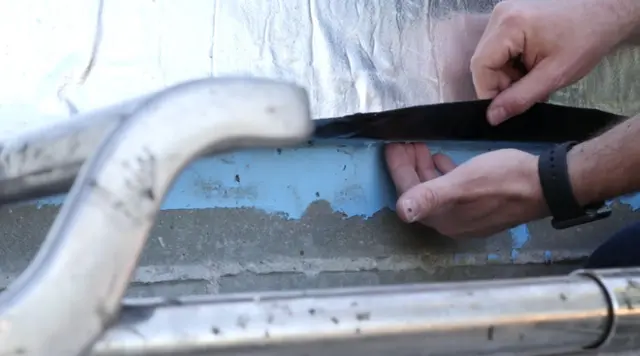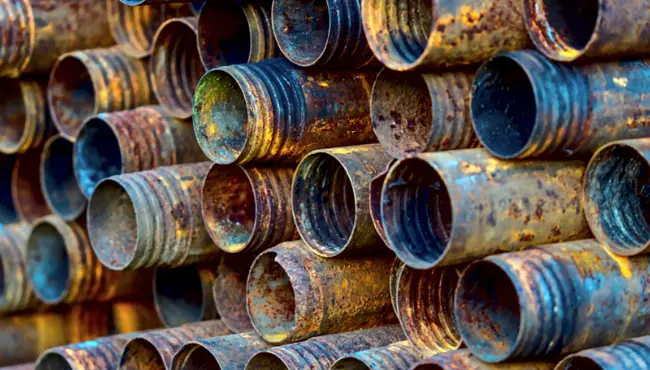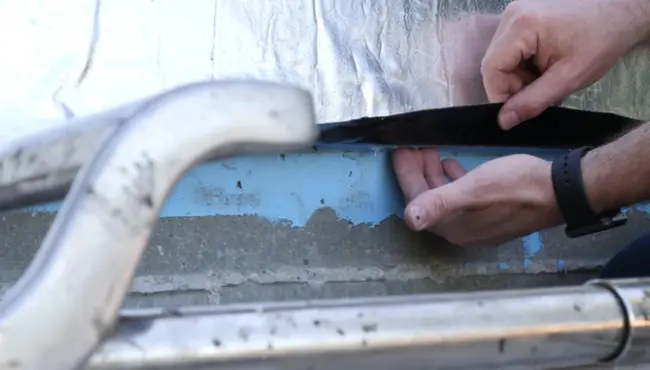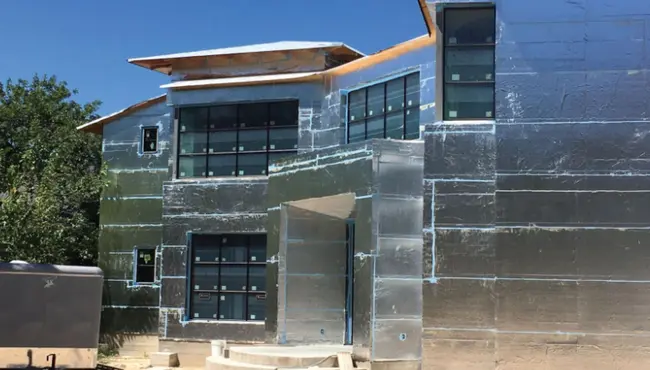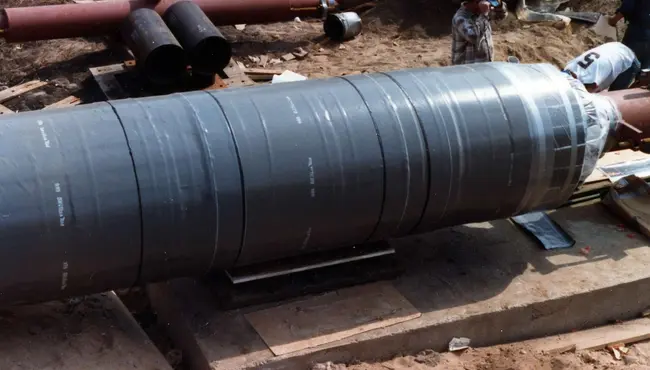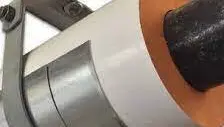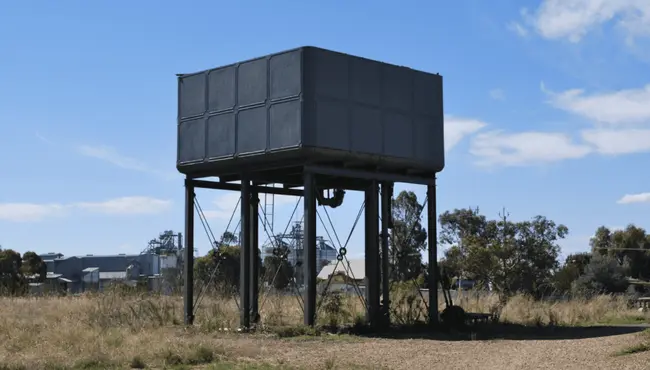
Air barriers play a vital role in protecting buildings from air leaks and moisture infiltration. When installed correctly, they significantly enhance energy efficiency, moisture control, and long-term structural durability.
This article offers a detailed look at the best practices for installing air barriers, focusing on the differences between fluid-applied and sheet-applied systems, with insights on climate-specific considerations and testing for compliance.
Differences Between Air and Vapor Barriers
Air barriers and vapor barriers are both essential components in controlling the flow of air and moisture through a building, but they serve different functions.
- Air barriers stop the uncontrolled movement of air in and out of the building envelope. This control helps maintain energy efficiency by limiting air leaks, which can lead to heat loss, drafts, and unwanted moisture infiltration.
- Vapor barriers, on the other hand, are designed to control the diffusion of moisture in the form of water vapor through walls. Vapor barriers help prevent condensation from forming within the walls, reducing the risk of mold, structural decay, and insulation damage.
In short, air barriers prevent airflow, while vapor barriers manage moisture. Deciding between the two depends on climate conditions and building type. Polyguard’s air barrier systems combine both elements when needed, ensuring a comprehensive solution for building protection.
Installing Fluid-Applied vs. Sheet-Applied Air Barriers
Air barriers come in two main forms—fluid-applied and sheet-applied—each offering unique benefits based on the complexity of the project.
Fluid-Applied Air Barriers
Fluid-applied barriers, such as Polyguard's Airlok Flex® VP, are applied as a liquid, forming a seamless and continuous layer once cured. This approach is ideal for projects with irregular surfaces, as the liquid conforms to the substrate, ensuring complete coverage without the need for fasteners. Some key advantages include:
- Adaptability: Works on complex surfaces like corners and penetrations.
- Fast Application: Reduces labor time when using spray equipment.
- Seamless Protection: Eliminates risks of air gaps and leaks.
Sheet-Applied Air Barriers
Airlok Sheet 400 HT/NP is a pre-manufactured, high-performance air and water barrier membrane designed to deliver uniform thickness and durability in demanding environments. This system is ideal for projects requiring long-lasting performance and the ability to withstand harsh conditions, while maintaining consistent installation results across all areas. Although installation may involve more labor due to cutting, taping, and overlapping, the benefits are clear:
- High-Temperature Resistance: Airlok Sheet 400 HT/NP is specifically engineered to withstand high temperatures, making it suitable for a wider range of climates and applications.
- Durability: This sheet-applied barrier is highly resistant to tearing and adverse environmental conditions, ensuring it remains effective over time.
- Reliability: The pre-manufactured membrane offers consistent thickness across all installation areas, providing a reliable air and moisture barrier that protects the building envelope.
Airlok Sheet 400 HT/NP is designed for applications where superior strength, temperature resistance, and consistent protection against air and water infiltration are paramount.
While both options are effective, the choice depends on the project’s specific needs, including climate, building complexity, and labor considerations.
Climate-Specific Substrate Preparation and Air Barrier Selection
Proper substrate preparation is crucial for effective air barrier installation, especially when factoring in climate. Selecting the right air barrier based on the climate zone is essential to ensure both performance and compliance with building codes.
Substrate Preparation in Hot, Humid Climates
In hot, humid climates (typically Climate Zones 1-4, according to the IRC and IBC), the main concern is preventing moisture buildup. Substrates must be clean and dry to ensure adhesion and prevent mold growth. In these zones, non-permeable air barriers are ideal for blocking both air and moisture. Polyguard’s Airlok Sheet 400 HT/NP is recommended for such conditions, as it provides excellent resistance to moisture and can withstand high temperatures, ensuring the building envelope remains well-protected from external humidity and heat.
Substrate Preparation in Cold Climates
In cold climates (typically Climate Zones 5 and above), the primary risk is vapor drive, where warm interior moisture migrates toward the cold exterior and can condense within the walls. A vapor-permeable air barrier like Airlok Flex® VP is ideal in these zones, as it allows moisture vapor to escape while maintaining airtightness, reducing the risk of condensation buildup and ensuring the wall assembly stays dry and energy efficient.
Climate Zones and Building Code Compliance
Choosing the right air barrier system not only improves performance but also ensures compliance with building codes such as the IRC and IBC, which outline specific requirements based on climate zones. Adhering to these codes helps ensure long-term energy efficiency and protection for the building envelope.
Step-by-Step Air Barrier Installation
Correct installation ensures air barriers perform as intended, providing continuous coverage across the building envelope.
Surface Preparation
Before installation, substrates must be clean, dry, and free from debris. Moisture on the surface can prevent adhesion, particularly in fluid-applied systems, which depend on bonding to create a seamless barrier.
Installing Fluid-Applied Air Barriers
- Apply the Barrier: Using a spray gun or roller, apply the fluid air barrier evenly across the surface. Ensure full coverage, particularly around penetrations and edges.
- Focus on Details: Pay close attention to critical areas like windows, doors, and joints. These areas require additional layers or flashing to maintain airtightness.
- Allow for Curing: Fluid-applied barriers typically require time to cure fully. Ensure the surface remains undisturbed until the barrier has bonded completely.
Installing Sheet-Applied Air Barriers
- Overlap Sheets: Sheets must overlap by at least 4 inches to ensure a continuous barrier.
- Tape Seams and Joints: Properly tape and seal all seams to prevent air leakage at the joints.
- Detailed Installation Around Penetrations: As with fluid-applied systems, extra attention must be given to windows, doors, and other penetrations to ensure no gaps are left unsealed.
Testing and Compliance: Blower Door Test and Standards
Ensuring the performance and durability of an air barrier requires rigorous testing to verify airtightness and adherence to industry standards.
Blower Door Test and ACH50
Once an air barrier is installed, its performance is typically evaluated using the blower door test. This test measures the air leakage in the building envelope, represented by the ACH50 value (Air Changes per Hour at 50 Pascals). A lower ACH50 value indicates better airtightness, directly improving the building's energy efficiency by minimizing air leakage.
Code Compliance with ACH50
Achieving low ACH50 values is essential for compliance with building codes such as the International Residential Code (IRC) and International Building Code (IBC). These codes specify acceptable air leakage limits based on the building’s climate zone, ensuring the structure remains energy-efficient and moisture-resistant across different environmental conditions.
ASTM Standards for Air Barriers
In addition to blower door testing, air barriers must comply with standards such as ASTM E2357 for air leakage and ASTM C1305 for crack-bridging. These tests verify that the air barrier can withstand pressure variations over time, ensuring it remains durable and continues to perform effectively.
Benefits of Low ACH50 and Compliance
By achieving low air leakage values and adhering to these industry standards, builders ensure that their projects not only comply with national building codes but also deliver long-term energy savings and enhanced building performance.
Ensuring Continuous Air Barrier Performance
To maximize the performance of air barriers, it’s crucial to ensure continuity. Breaks or gaps in the barrier—whether due to improper installation or physical damage—can undermine the entire system. Regular inspection and maintenance, especially around high-risk areas like penetrations, are essential for maintaining long-term effectiveness.
Explore Polyguard’s Air Barrier Solutions
Choosing the right air barrier system is vital to protecting your building’s integrity and improving energy efficiency. Polyguard offers a comprehensive range of air barrier solutions, including fluid-applied and sheet-applied systems, designed to meet the unique demands of diverse construction projects. Whether your project requires seamless flexibility or the reliability of a pre-manufactured membrane, we have the products to ensure long-lasting performance.
Contact us today for more information.
